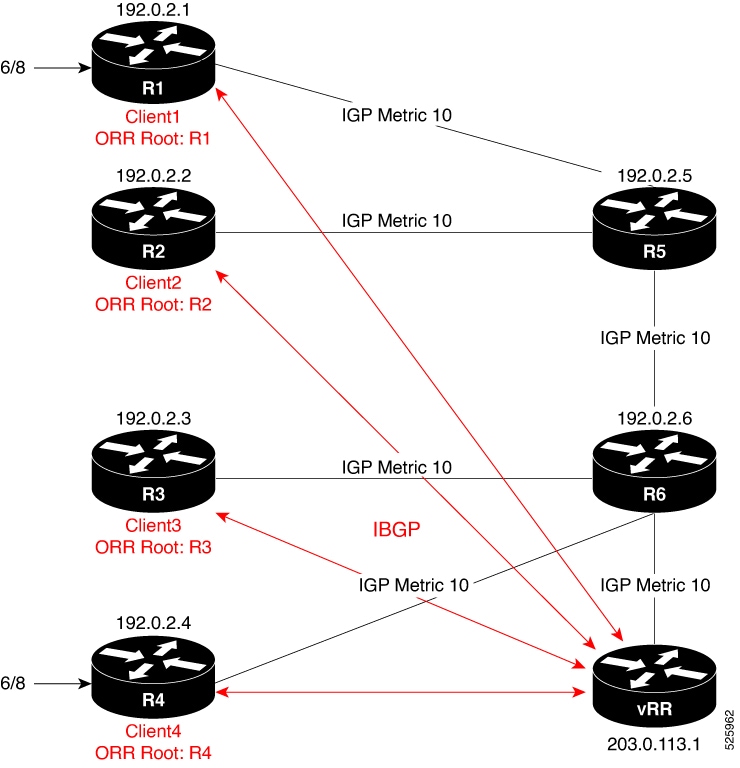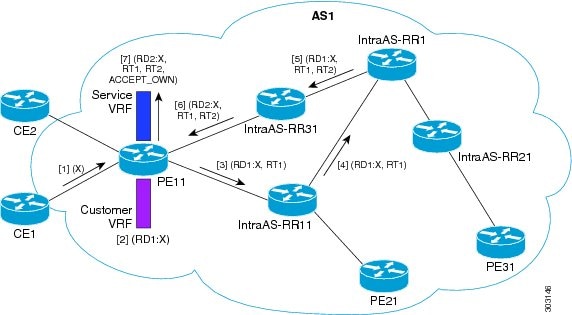BGP route reflectors
A BGP route reflector is a type of internal BGP (iBGP) router that
-
allows iBGP routers to share routes without needing every router to peer with every other router
-
designates specific iBGP peers as clients to simplify network topology, and
-
uses a cluster ID to coordinate with other route reflectors for redundancy and to prevent routing loops.
A route reflector client is an iBGP peer that receives routes from the route reflector and advertises its own learned routes back.
A cluster is a group consisting of a route reflector and its clients, and is identified by a unique cluster ID.
Route reflector mechanism:
In traditional iBGP networks, every iBGP router must peer with all other iBGP routers, which increases complexity as the network grows. BGP route reflectors address this scalability challenge by allowing designated routers (the route reflectors) to handle route sharing and peering. Only route reflectors maintain full iBGP sessions with each other, while other routers (clients) peer only with their assigned route reflector.
Redundancy with multiple route reflectors:
To increase redundancy and avoid a single point of failure, you can configure multiple route reflectors within the same cluster. Each reflector in the cluster uses the same 4-byte cluster ID. This ensures correct route learning and prevents routing loops.
Support for duplicate cluster IDs:
Special configuration options, such as the cluster-id allow-equal command, enables a router to accept routes with duplicate cluster IDs, but this option should be used carefully.
Configure a route reflector for BGP
Configure a router to function as a BGP route reflector and designate BGP neighbors as route-reflector clients within a specified cluster.
Before you begin
-
Know the autonomous system (AS) number and desired cluster ID.
-
Determine which BGP neighbors should be route-reflector clients.
Procedure
|
Configure a router as a BGP route reflector and configure the neighbor as its client. Example: |
BGP multiple cluster IDs
A BGP multiple cluster ID is a route reflection feature that
-
allows a route reflector to have both a global cluster ID and additional cluster IDs assigned to individual clients (neighbors)
-
automatically adjusts the loop prevention mechanism based on CLUSTER_LIST to support multiple cluster IDs, and
-
enables a network administrator to disable client-to-client route reflection based on cluster ID.
Before the introduction of multiple cluster IDs, a device could have only a single, global cluster ID. With this feature, configuring per-neighbor cluster IDs allows greater flexibility and control in BGP route reflection.
 Remember |
The BGP multiple cluster IDs feature only works in the default VRF. |




 Feedback
Feedback